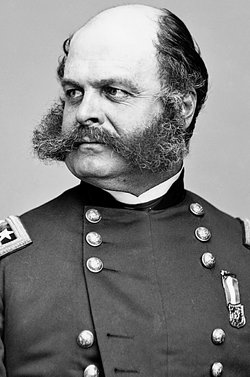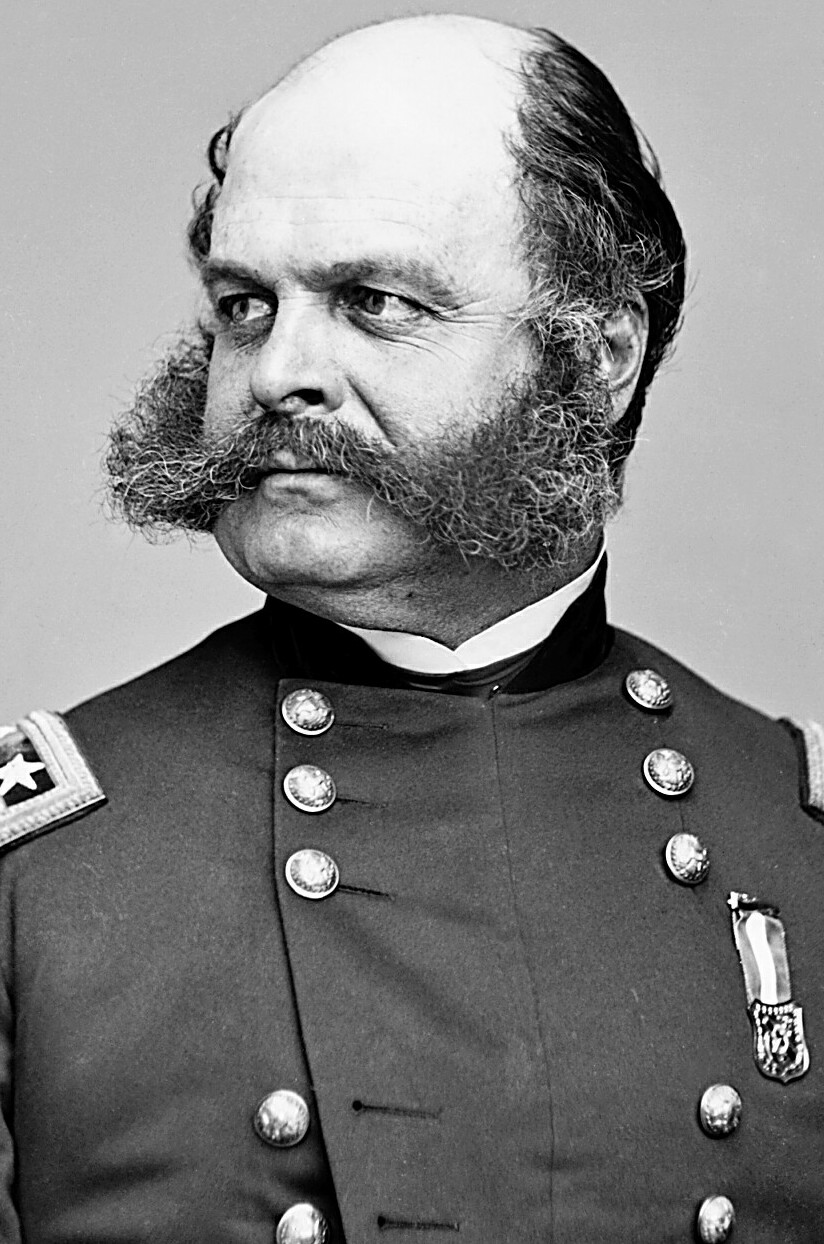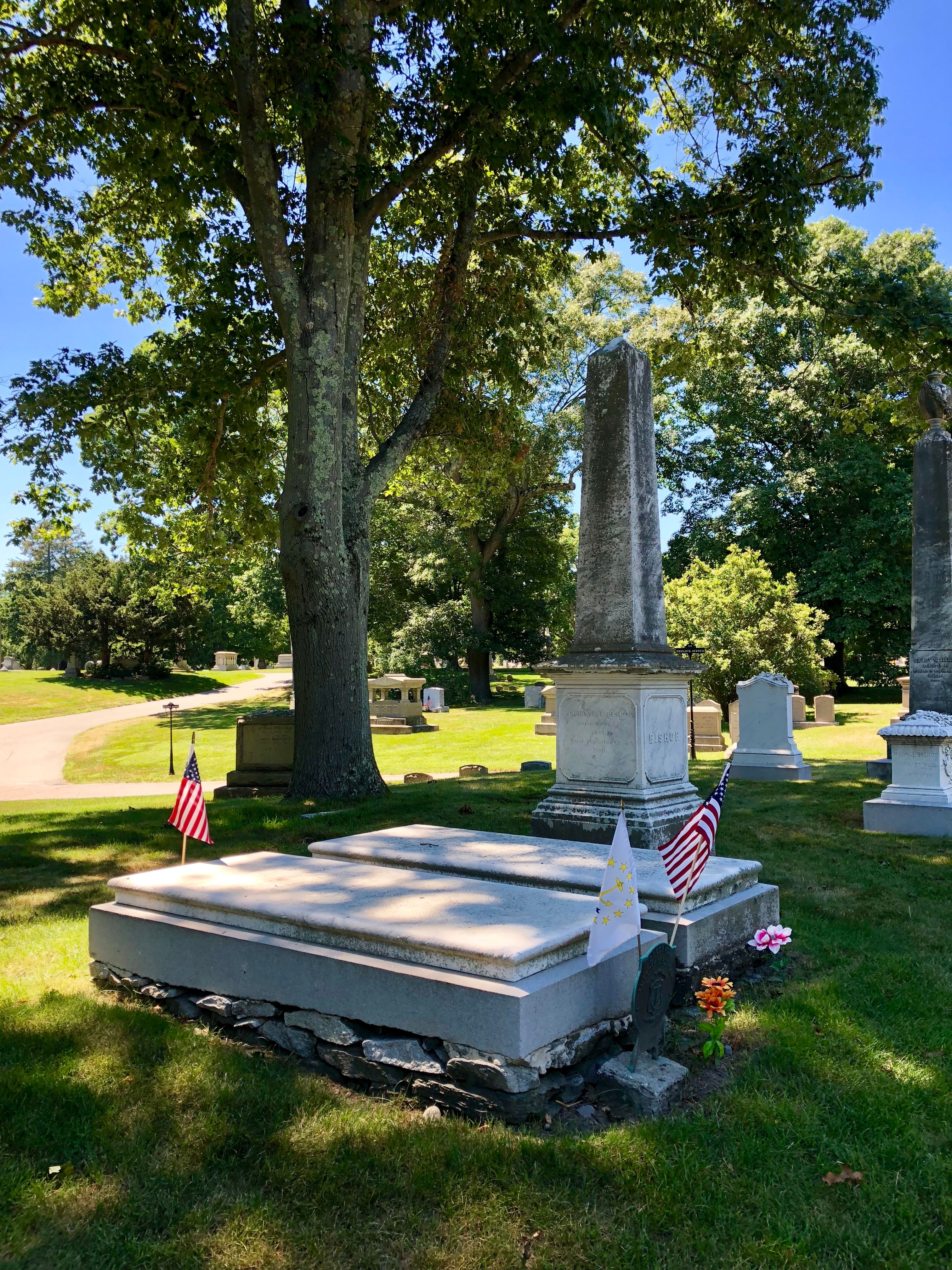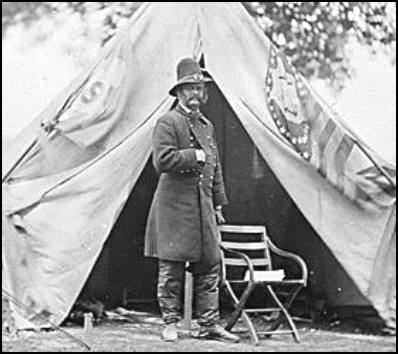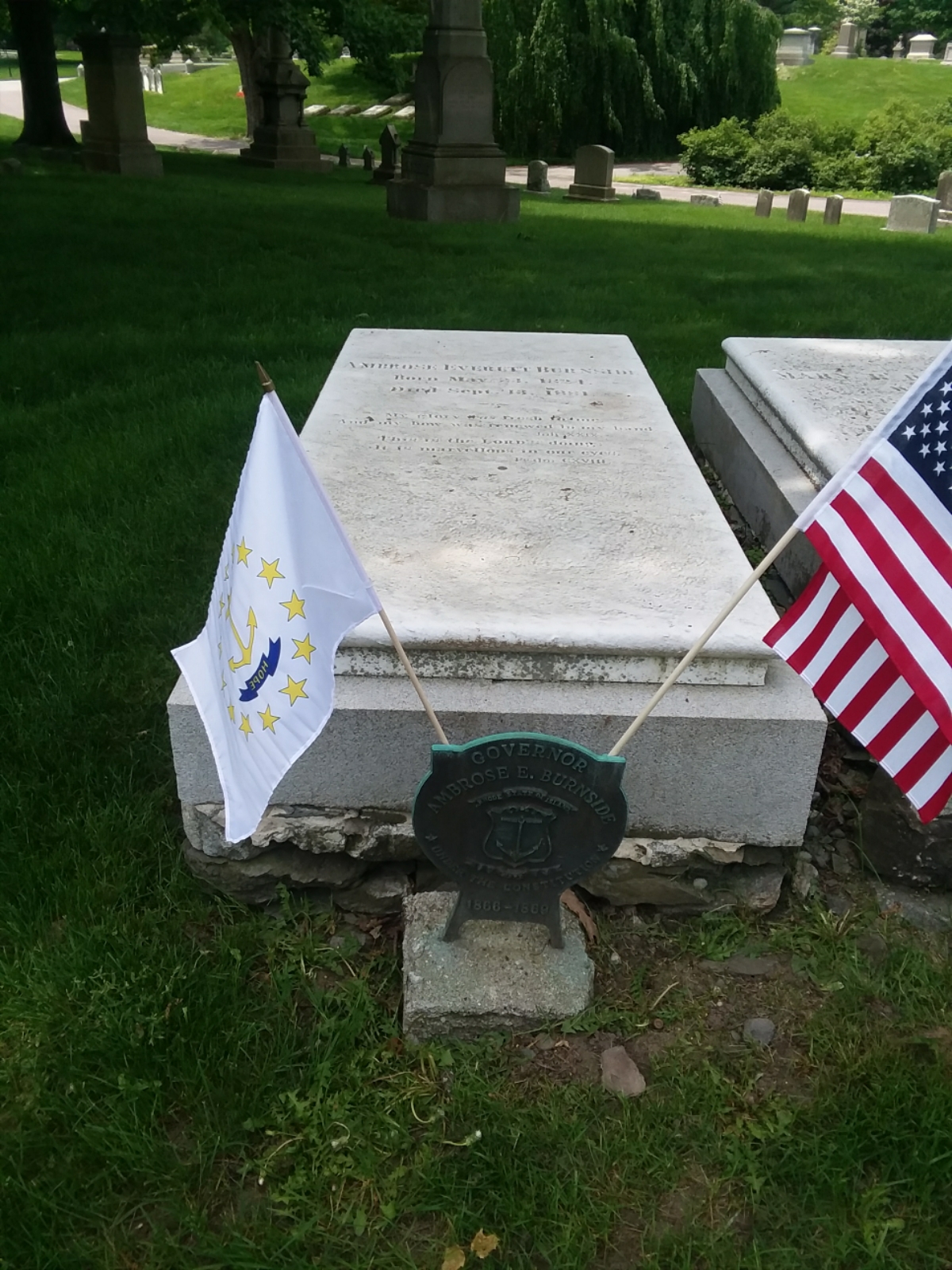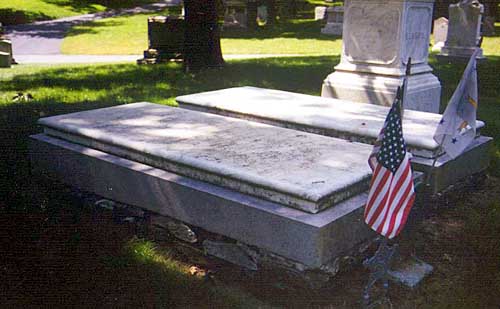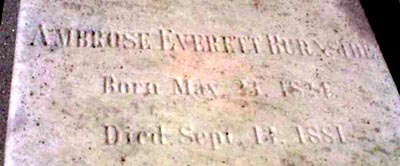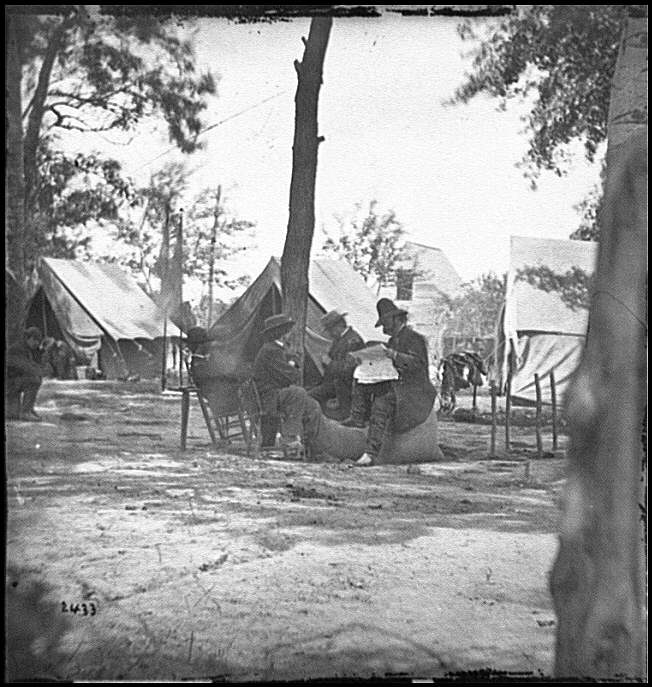He was born in Indiana and graduated from West Point in 1847. With the outbreak of the Civil War he raised a regiment and was made a Colonel of the 1st Rhode Island. He was promoted to Major General in 1862. He was twice offered command of the Army of the Potomac, but realizing his own limitations, refused. He fought at Second Bull Run and Antietam.
It was at Antietam, that he led an entire Wing of the army in a slow attack at the Stone Bridge (today called Burnside's Bridge). The delay allowed A. P. Hill's troops to come up from Harper's Ferry and contain the Union breakthrough. Again he was offered command; he hesitated but accepted.
On December 13, 1862, Burnside made numerous assaults against Lee's well-defended army at the Battle of Fredericksburg. It was a disaster, which almost destroyed the Army of the Potomac. Soon after the battle, he was reassigned to the Department of the Ohio.
He fought at the Wilderness and Spotsylvania where he was reluctant to commit his troops after the Fredericksburg fiasco. After a blunder at the siege of Petersburg he was sent on leave and never recalled.
After the war, he was elected three times Governor of Rhode Island. He was the first president of the NRA in 1871. He was also famous for his strange whiskers, from which the term "sideburns" was coined.
He was born in Indiana and graduated from West Point in 1847. With the outbreak of the Civil War he raised a regiment and was made a Colonel of the 1st Rhode Island. He was promoted to Major General in 1862. He was twice offered command of the Army of the Potomac, but realizing his own limitations, refused. He fought at Second Bull Run and Antietam.
It was at Antietam, that he led an entire Wing of the army in a slow attack at the Stone Bridge (today called Burnside's Bridge). The delay allowed A. P. Hill's troops to come up from Harper's Ferry and contain the Union breakthrough. Again he was offered command; he hesitated but accepted.
On December 13, 1862, Burnside made numerous assaults against Lee's well-defended army at the Battle of Fredericksburg. It was a disaster, which almost destroyed the Army of the Potomac. Soon after the battle, he was reassigned to the Department of the Ohio.
He fought at the Wilderness and Spotsylvania where he was reluctant to commit his troops after the Fredericksburg fiasco. After a blunder at the siege of Petersburg he was sent on leave and never recalled.
After the war, he was elected three times Governor of Rhode Island. He was the first president of the NRA in 1871. He was also famous for his strange whiskers, from which the term "sideburns" was coined.
Inscription
My glory was fresh in me, and my bow was renewed in my hand.
This is the Lord's doing;
It is marvelous in our eyes.
Family Members
Advertisement
See more Burnside memorials in:
Explore more
Sponsored by Ancestry
Advertisement
